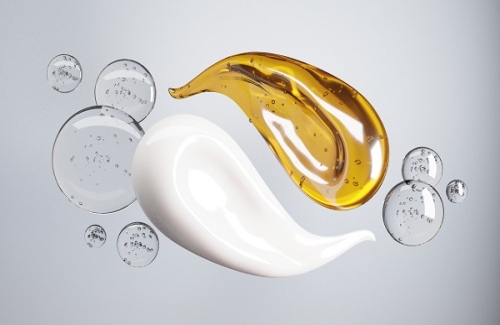| Classification |
Type |
Characteristics |
Common Emulsifiers and Applications |
| Ionic Nature |
Anionic |
Tend to be more irritating, often combined with non-ionic emulsifiers to create milder formulations. |
Sodium Stearate, Sodium Lauryl Sulfate (SLS) Used in cleansers,creams, lotions |
|
Cationic |
Bind with keratin on the skin's surface, which can enhance product performance but may cause irritation. |
Cetyltrimethylammonium Chloride (CTAC), Benzalkonium Chloride
Used in conditioners, hair treatments for anti-static and smoothing effects |
|
Non-ionic |
Least likely to irritate the skin, often used with other emulsifiers to reduce potential irritation. |
Polysorbates (e.g., Polysorbate 20), Glycerol Stearate
Used in creams, lotions, serums, gentle on the skin |
| Emulsion Type |
Oil-in-water (O/W) |
Light and non-greasy; oil droplets are dispersed in water. |
Glycerol Monostearate,Lecithin,
Suitable for most skincare lotions, creams, serums |
|
Water-in-oil (W/O) |
Rich and moisturizing; water droplets are dispersed in oil. |
Sorbitan Stearate, Lanolin Alcohol
Used in sunscreens, repair creams for long-lasting moisture |
| Origin |
Natural |
Derived from natural sources; eco-friendly; gentle on skin. |
Beeswax, Lecithin, Lanolin
Used in organic skincare, baby care products |
|
Synthetic |
Man-made; highly stable; consistent performance. |
PEG Esters, Silicone-based emulsifiers
Used in high-performance skincare, cosmetics, enhancing stability |






.jpg)



